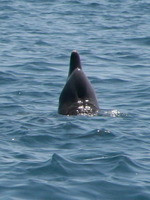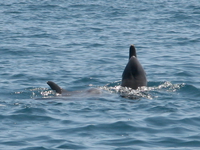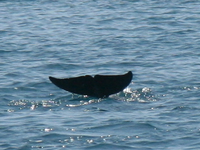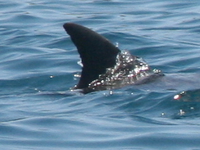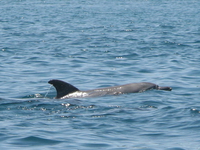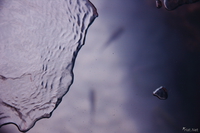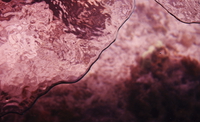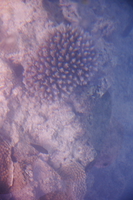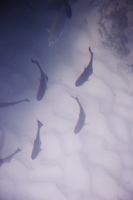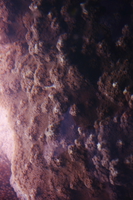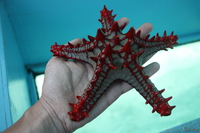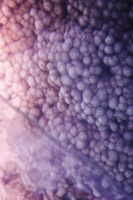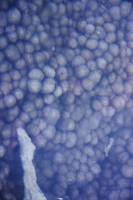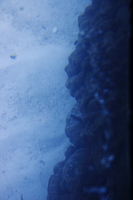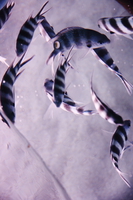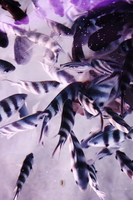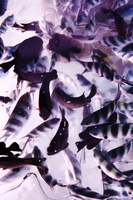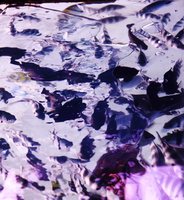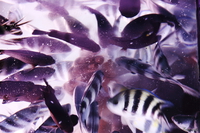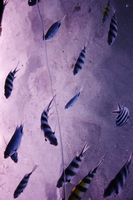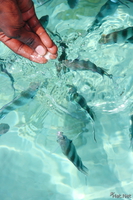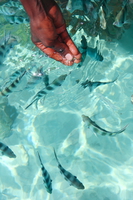sea fish
Starfish or sea stars are any echinoderms belonging to the class Asteroidea. The names sea star and starfish are also (incorrectly) used for the closely related brittle stars, which make up the class Ophiuroidea.
Starfish exhibit a superficially radial symmetry. They typically have five or more "arms" which radiate from an indistinct disk (pentaradial symmetry). However, the evolutionary ancestors of echinoderms are believed to have had bilateral symmetry. Starfish do exhibit some superficial remnant of this body structure, evident in their larval pluteus forms.
Starfish do not rely on a jointed, movable skeleton for support and locomotion (although they are protected by their skeleton), but instead possess a hydraulic water vascular system that aids in locomotion. The water vascular system has many projections called tube feet on the ventral face of the starfish's arms which function in locomotion and aid with feeding.
The star fish usually hunt for shelled animals such as oysters and clams. They have two stomachs. One stomach is used for digestion, and the other stomach can be extended outward to engulf and digest prey. This feature allows the starfish to hunt prey that is much larger than its mouth would otherwise allow. Starfish are able to regenerate lost arms. A new starfish may be regenerated from a single arm attached to a portion of the central disk.
Starfish are composed of a central disc from which arms sprout in pentaradial symmetry. Most starfish have 5 arms, but some have more or fewer. Some starfish have shown differing numbers of limbs within a single species. The mouth is located underneath the starfish, on its ventral surface. The spiny upper surface is called the aboral or dorsal surface. On the aboral surface there is a structure called the madreporite, a small white spot located slightly off-center on the central disc which acts as a water filter and supplies the starfish's water vascular system with water to move. Porcellanasteridae employ additional cribriform organs used to generate current in the burrows made by these infaunal starfish.
While having their own basic body plan, starfish radiate diversely in shapes and colors, the morphology differing between each species. A starfish may have dense rows of spines as a means of protection, or it may have no spines at all. Ranging from nearly pentagonal (example: Indo-pacific cushion star, Culcita novaeguineae) to gracile stars like those of the Zoroaster genus.
Surrounding the spines on the surface of the starfish are small white objects known as pedicellariae. There are large numbers of these pedicellariae on the external body which serve to prevent encrusting organisms from colonizing the starfish. The radial canal which is across each arm of the starfish has tooth-like structures called ampullae, which surround the radial canal.
On the end of each arm or ray there is a microscopic eye which allows the starfish to see, although it only allows it to see light and dark, which is useful to see movement.
Patterns including mosaic-like tiles formed by ossicles, stripes, interconnecting net between spines, pustules with bright colors, mottles or spots. These mainly serve as camouflage or warning coloration which is displayed by many marine animals as a means of protection against predation. Several types of toxins and secondary metabolites have been extracted from several species of starfish. Research into the efficacy of these compounds for possible pharmacological or industrial use occurs worldwide.
The zebrafish or zebra danio, Danio rerio, is a tropical fish belonging to the minnow family (Cyprinidae). It is a popular aquarium fish, frequently sold under the trade name zebra danio, and is also an important model organism in scientific research.

